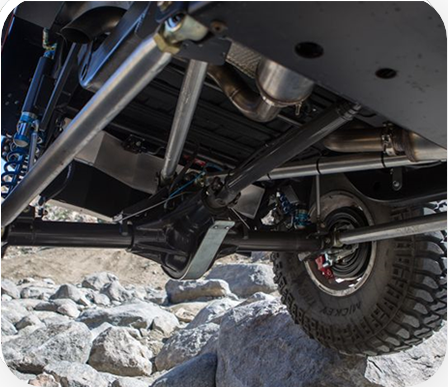
What is the multi-link suspension : a multi-link design, usually with four or five arms, known as links, allows an independently-sprung wheel to combine both ride quality and handling. It’s laterally stiff so a car thus equipped won’t flop around through corners as much as with other designs, but it also allows smooth, independent movement of a wheel over even large bumps.
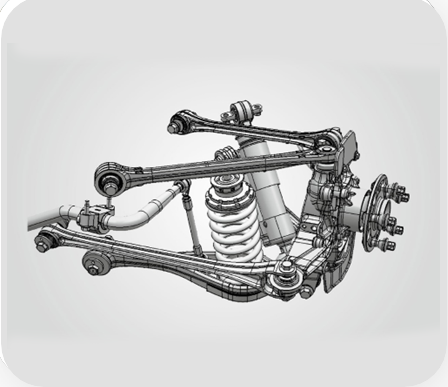
The origins of the multi-link suspension go back to the late 60’s. In 1969 Mercedes-Benz made a C111 prototype which was a tested platform for new technologies. Over the 60’s and 70’s Mercedes-Benz made 4 version of this car, which were powered by rotary engines (3 and 4 rotor), a turbodiesel and a twinturbo petrol V8 engine.
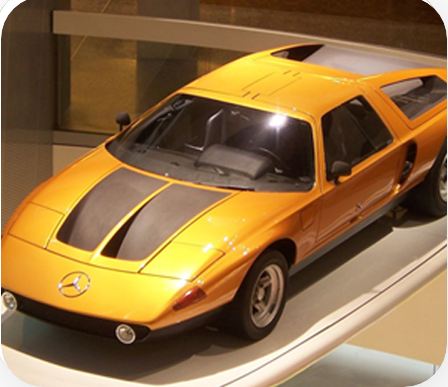
Besides the newer suspension system, each version of a prototype had an engine mounted in the middle, fibreglass body and characteristic gull-wing door. The great experience with new solution encouraged engineers to implement this type of suspension to mass production. In 1974 they began designing a new model. The development process cost was a bewildering 2 billion German marks. In 1982 Mercedes-Benz introduced the 190E (W201), the first serial car with a multi-link suspension in rear axle.
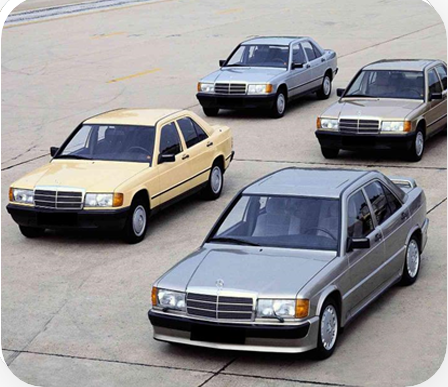
A multi-link needs a minimum of three lateral bars and one vertical(ish), or longitudinal. Each arm’s purpose is to limit and/or prevent the six degrees of an axle’s freedom:
up and down / left and rigth / backwards and forwards
Sometimes some of the arms have ‘elbow’ joints along their length to achieve the necessary clearance around an axle while still achieving the proper angle of attack to fix to the hub. These arms do not have to be of equal length and may be angled away from their "obvious" direction.

Typically, each arm has a spherical joint (ball joint) or rubber bushing at each end. Consequently, they react to loads along their own length, in tension and compression, but not in bending. Some multi-links do use a trailing arm, control arm or wishbone, which has two bushings at one end.
On a front suspension one of the lateral arms is replaced by the tie-rod, which connects the rack or steering box to the wheel hub.
The solid axle multi-link system is another variation of the same concept, and offers some advantages over independent multi-link, as it is significantly cheaper and less complex to build, offering good mechanical resistance and excellent reliability with very similar benefits.

To simplify understanding, it is usual to consider the function of the arms in each of three orthogonal planes:
Top view:
The arms have to control toe/steer and lateral compliance. This needs a pair of arms longitudinally separated.
Front view:
The arms have to control camber, particularly the way that the camber changes as the wheel moves up (into jounce, or bump) and down into rebound or droop.
Side view:
The arms have to transmit traction and braking loads, usually accomplished via a longitudinal link. They also have to control caster. Note that brake torques also have to be reacted - either by a second longitudinal link, or by rotating the hub, which forces the lateral arms out of plane, so allowing them to react 'spin' forces, or by rigidly fixing the longitudinal link to the hub.
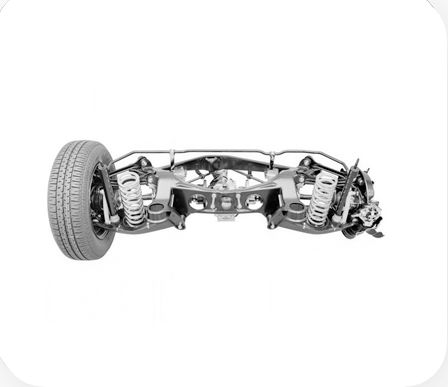
Multi-link suspension allows the auto designer the ability to incorporate both good ride and good handling in the same vehicle. In its simplest form, multi-link suspension is orthogonal, which means it is possible to alter one parameter in the suspension at a time, without affecting anything else.
Advantages also extend to off-road driving. A multi-link suspension allows the vehicle to flex more; this means simply that the suspension is able to move more easily to conform to the varying angles of off-road driving. Multi-link-equipped vehicles are ideally suited for sports such as desert racing. In desert racing, the use of a good sway bar is needed to counter body roll.
The benefit of the triangulated and double-triangulated arrangement is that they do not need a panhard bar. The benefits of this are increased articulation and potential ease of installation.
Multi-link for solid axle offers a benefit over the independent multi-link in that it is significantly cheaper and much less complex to build.
Multi-link suspensions used to be expensive, but in recent years costs have come down and various interpretations of this solution have found their way even into front-wheel drive hatchbacks. For the most part these multi-link setups have replaced cheaper but effective trailing arms. It can also be used at the front, where one arm is linked to the steering rack, but it’s still less common than a strut. Some BMWs use a type of multi-link system at the front and Hyundai has dabbled in the same thing with its Genesis.
https://www.carthrottle.com/post/what-is-multi-link-suspension-and-how-is-it-used/
https://en.wikipedia.org/wiki/Multi-link_suspension
https://www.tedgum.pl/en/multi-link-suspension-what-are-the-origins-of-it/
Edit by ascari
